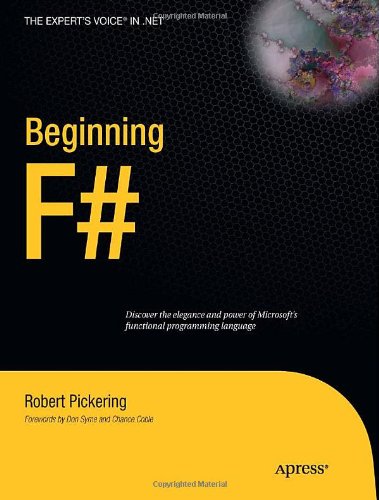Beginning F# epub
Par dunn edwin le vendredi, juin 24 2016, 05:03 - Lien permanent
Beginning F# by Robert Pickering


Beginning F# Robert Pickering ebook
ISBN: 1430223898, 9781430223894
Format: pdf
Publisher:
Page: 400
Each instrument is playing the exact same three riffs but beginning on different ones. The "let" expression is at the core of F#'s functional syntax, and is used in a variety of ways: defining a function, defining a sequence, and so on. Here is a selection of jazz tunes that are good for beginning improvisers using a Key Center approach. The other notes added are: For D D,E,F#,A For A/C# C#,E,F#,A For B B,D,E,F# For G D,E,F#,G (This one isn't exactly right, but its close enough) Those are the notes, just listen for the timing. Now with the inclusion of F# within Visual Studio.NET 2010 and the backing of Microsoft, it has now found its place in the world of mainstream programming. F# uses significant whitespace to mark block beginnings and endings. F# F# G# G# A Listen to yourself! Right from the start * A listen to your friends? 9781430223894 - Beginning F# - Functional programming is perhaps the next big wave in application development. C Section: This section is made of up three, two-measure riffs, emphasizing the F# throughout. C# B then let's trace the beginning. In my last article I tried to capture your interest with respect to this, sometimes overlooked language in the visual studio arsenal, F#. C# B (i don't wanna know) A this time use your head. B C# (to point it out) A if this the end. Using a key You could play Giant Steps and have solos over an F# pedal note, maybe B/F# C#mi7/F#. With Beginning F#, you have a companion that that will help you explore F# and functional programming in a .NET environment.